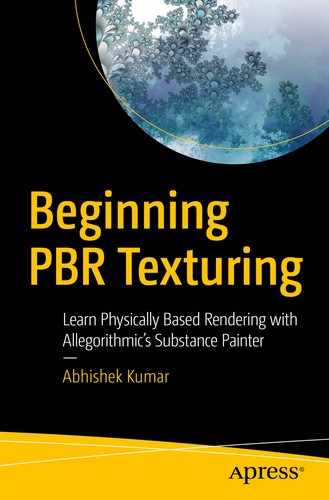To start painting, you need a 3D model. The 3D model should be in OBJ, FBX, or ABC format. Those are the only files you can import into Substance Painter. You may have your own model; if not, you can download one from the Internet to practice on.
Getting Started with Substance Painter

“New project” window

Selected file’s location being displayed
Now the OK button should be active, so click it to initialize the project. Once done, you should see your model sitting in the center of the screen without any textures.
Project Configuration in Detail
Before we continue, let’s discuss more about this “New project” window. You have probably seen there are few settings in the “New project” window. We will explore them now. First, you need to know what your target render engine is.
Templates: Different engines use different types of maps for rendering. Some may use the specular-gloss workflow, while others may use the metallic-roughness workflow. Also, the normal map format may differ as some engines prefer OpenGL while others use DirectX. For this purpose, various templates have been preset inside Substance Painter that automatically set up your project correctly. The presets also allow you to export maps in a way that is suitable for your preferred render engine.
Create a texture set per UDIM tile: This will create a new texture set for every UDIM tile contained in your model if it has any.
Import Cameras: This will import cameras in the present file from your exported scene, which you can switch between any time by pressing the arrow keys on your keyboard.
Document resolution: This allows you to change the resolution of your texture square. Substance Painter uses a nondestructive workflow, so you can start your project with any resolution and change it later without any problems. Substance Painter will simply recalculate all the maps.
Normal map format: This allows you to choose between the OpenGL and DirectX normal map formats. Different render engines will use either of the maps, and you should choose your map accordingly.
Compute tangent space per fragment: If this checkbox is enabled, then normals, binormals, and tangents for the imported mesh are calculated in Pixel Shader. It’s best to keep this unchecked most of the time unless you want to export your maps to Unreal Engine.
The last option is “Import mesh normal maps and baked maps for all materials,” which you can use to import any mesh maps like the normal map that you baked outside of Substance Painter and imported into Painter.
In the next chapter, you will see what mesh maps are and how to bake them.
